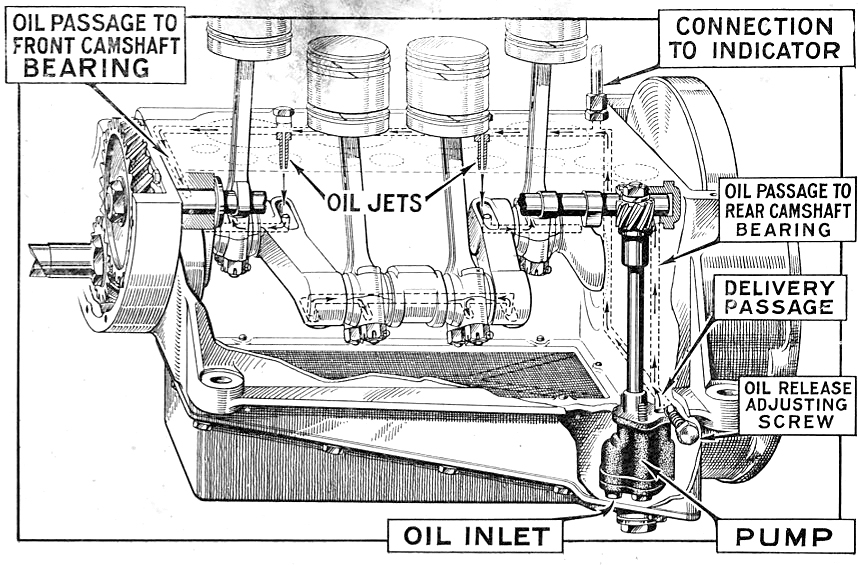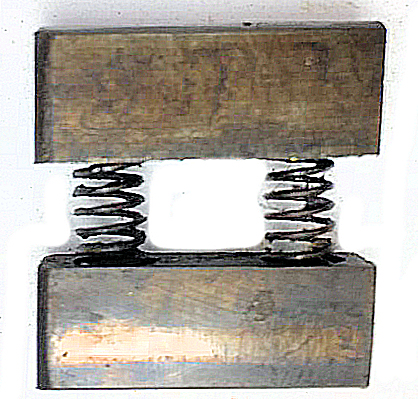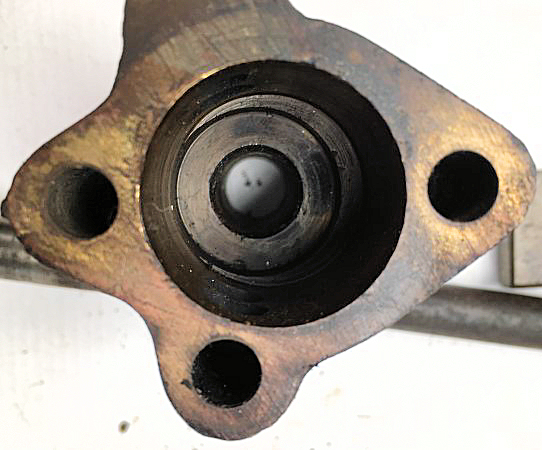
RESTORING THE OIL PUMP
The oil pump is a simple two vane
affair which quietly sits in the corner of the sump, driven from a gear on the
rear of the camshaft. The driven spindle is off-set within the body and the two
vanes are held in contact with the pump body by springs. As the pump rotates the
vanes slide backwards and forwards collecting oil from the sump and delivering
it to the engine oil galleries.
These pumps go on doing their job for years with little attention. However wear does take place due to the many gallons of dirty oil passing through them and their efficiency can be affected. Wear takes place in three areas. The internal bore of the pump gets scored along with the vanes, and the base plate gets worn away. This wear allows oil to escape past the vanes resulting in lower pressure.
Fortunately they can usually be
reconditioned. The internal bore of the pump can be skimmed. This does not only
clean up the bore it also increases the capacity of the pump, a trick commonly
used in race engines. Removing .030” normally cleans the bore. It is possible to
take a little more but be careful or you could break into one of the fixing
screw holes. Dressing the vanes to remove scoring is more difficult but can be
done by careful use of a stone or emery paper on a flat surface. It is important
to keep the stoned face square with the end of the vane. Finally reface the base
plate by lapping it on a known flat surface. When reassembling the pump use new
springs. An important measurement is the clearance between the base plate and
the pump spindle. This should not exceed .002”. Adjust by either shortening the
spindle or the pump body as appropriate. And finally when fitting the vanes the
curved ends go in first, the flat ends against the base plate. (putting these in
the wrong way round can result in no pressure). If you grease the vanes during
assembly, the pump will prime much quicker.



What pressure can you expect? This will depend on several things - temperature, grade of oil, engine speed , jet size, losses within the engine and setting of the oil relief valve. But for guidance, the following might give you some idea of what to expect. Don't forget this is a splash fed engine and flow is more important than pressure. The same pump is fitted to all Austin Seven pressure-fed engines and if in good condition will maintain 40lbs at high speed.
Standard 2-bearing
splash-fed engine.
With a standard pump and 30 grade or 20/50 oil:
800 rpm tick over
cold 10+ lbs., hot 2 - 3 lbs.
2000 rpm / 30 mph
hot 5 - 6 lbs
Some other things to check when assembling the engine which can affect oil pressure:
Seating of gasket between pump and
crankcase.
Leakage from internal gallery blanking plugs.
Leakage around front camshaft bearing.
Poor seating of oil relief valve ball.
Vince Leek